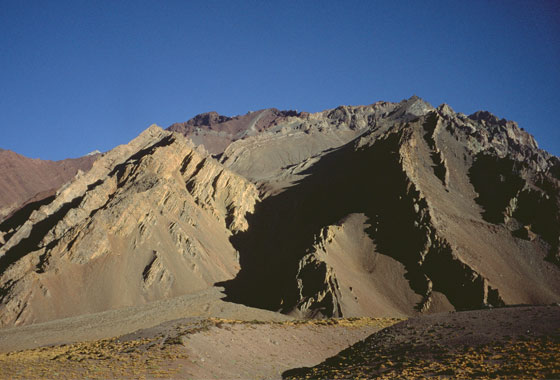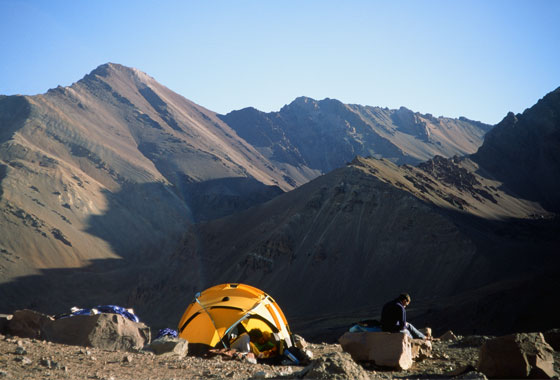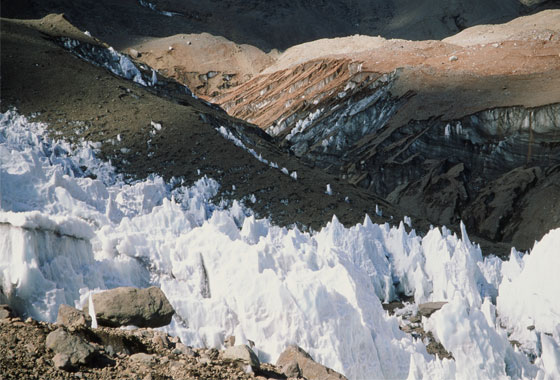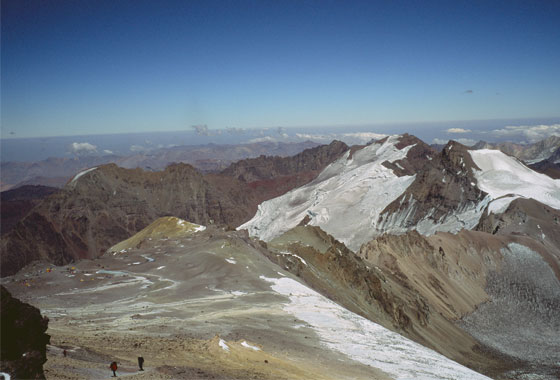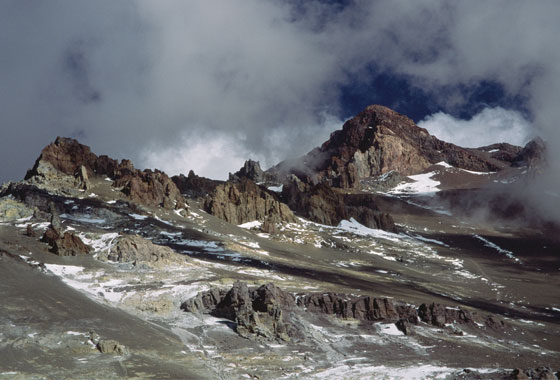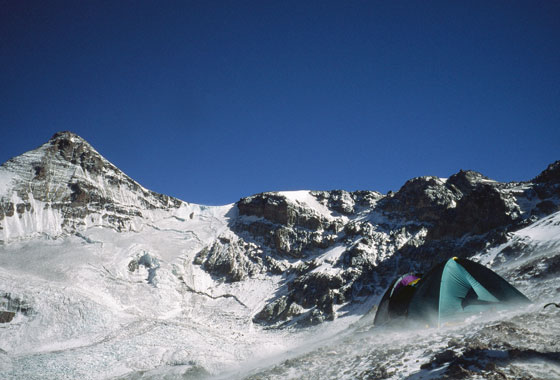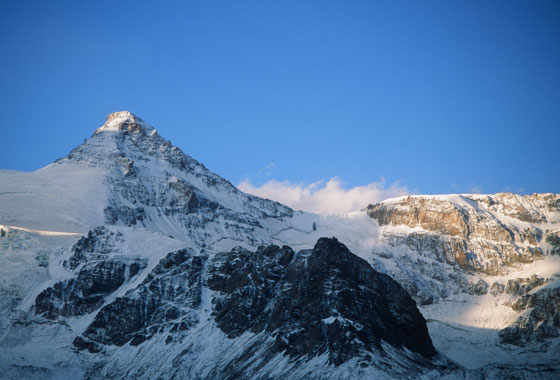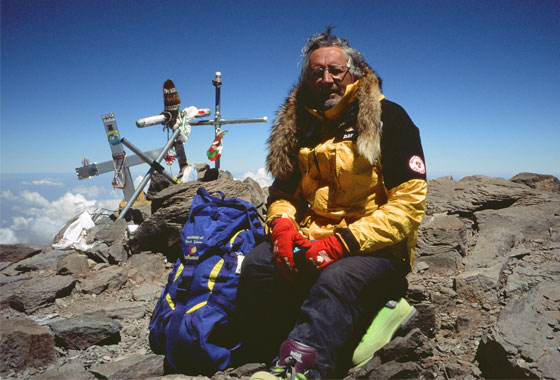This mountain hides its secrets very well, and holds many surprises for those planning to climb it. A dry mountain, with only a few glaciers, it rises high above the clouds and poses a real challenge. It demands more commitment than one might think, and is higher than any other Andean peak.
Expedition
After climbing a volcano, Maïpo (5 100m), Bernard reached the summit of Aconcagua on January 20, 1997. He was accompanied by the famous French climber Lucien Bérardini, who was the first to succeed in climbing the mountain by the south face, over 45 years ago. In honour of this expedition, the base camp on the south side has been named Plaza Francia. During this expedition, Nathalie climbed to camp II, at 6 000m.
The highest peak in the Americas (6 959m), Aconcagua dominates the Andes. It is located in Argentina, 12km from the Chilean border. Its south face is considered one of the major mountain faces in the world. The normal route taken by Bernard has no glaciers; some névés, steep slopes of unstable pebbles, its capricious weather and its altitude are the main difficulties.
The summit is wide and flat. Since Aconcagua is located in the southern hemisphere (32°40’S), the best season for climbing it is January. The mountain’s easy and accessible approach often leads people to underestimate its difficulty. It must be remembered, nevertheless, that high-altitude mountain climbing always calls for experience, good preparation and great mental discipline.
Facts and figures
- Summit date: January 20, 1997
- Elevation: 6 959 m

